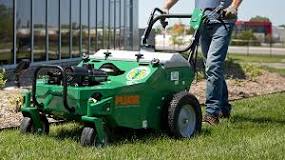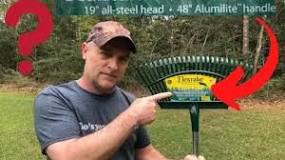When it comes to haymaking, many folks often wonder: what’s the difference between a rake and a tedder? Well, the short answer is that while both are essential tools for managing hay, they serve different purposes. A rake gathers and arranges hay into neat rows for easy collection, while a tedder spreads out freshly cut hay to promote drying. Let’s dive deeper into these two handy machines!
Understanding the Rake
Purpose
The primary job of a rake is to collect hay. After mowing, the grass is usually in a tangled mess. A rake helps organize that mess into tidy windrows, making it easier for farmers to pick up the hay later.
Types of Rakes
- Wheel Rakes: These have multiple wheels with tines that gather hay. They’re great for larger fields and can handle a good amount of material.
- Bar Rakes: These are simpler and often used for smaller operations. They have a bar with tines that sweep across the ground.
Benefits
- Efficiency: Rakes speed up the process of collecting hay.
- Versatility: They can be used for various types of forage, not just grass.
Understanding the Tedder
Purpose
Tedders are all about spreading! After cutting hay, it needs to dry out properly. A tedder fluffs and aerates the grass, allowing sunlight and wind to do their magic.
Types of Tedders
- Rotary Tedders: These have spinning arms that fling the hay around. They’re super effective at breaking up clumps.
- Chain Tedders: These use chains to spread out the hay. They’re generally less aggressive but still get the job done.
Benefits
- Faster Drying: By spreading out the hay, tedders help it dry quicker, reducing spoilage.
- Improved Quality: Properly dried hay retains more nutrients, which is great for livestock.
Key Differences
So, here’s the gist: rakes gather and arrange hay while tedders spread and aerate it. If you think about it like cooking, rakes are like your mixing bowl—collecting everything together—while tedders are like your oven—cooking things evenly.
Summary
In summary, both rakes and tedders play crucial roles in hay production. Understanding their differences can help you choose the right tool for your farming needs. So next time you’re out in the field, remember: if you want to gather up that fresh cut grass, grab a rake; if you need to fluff it up for drying, reach for a tedder!
FAQ
What is more important: a rake or a tedder?
It really depends on what stage you’re at in your haymaking process. If you’ve just mowed your grass and need to dry it out, a tedder is essential. But once it’s dried and ready to be collected, you’ll definitely need a rake.
Can I use one instead of the other?
Not really! Each tool has its specific function. Using a rake when you should be using a tedder might lead to damp hay that doesn’t dry properly, while using a tedder instead of a rake means you’ll struggle to collect your hay efficiently.
How often should I use a tedder?
It’s best to use a tedder right after cutting your grass. If conditions are humid or wet, you might need to go over it more than once to ensure it’s adequately spread out for drying.
Are there any maintenance tips for these machines?
Absolutely! Regularly check tines on both rakes and tedders for wear and tear. Keeping them clean and lubricated will also extend their lifespan significantly.







